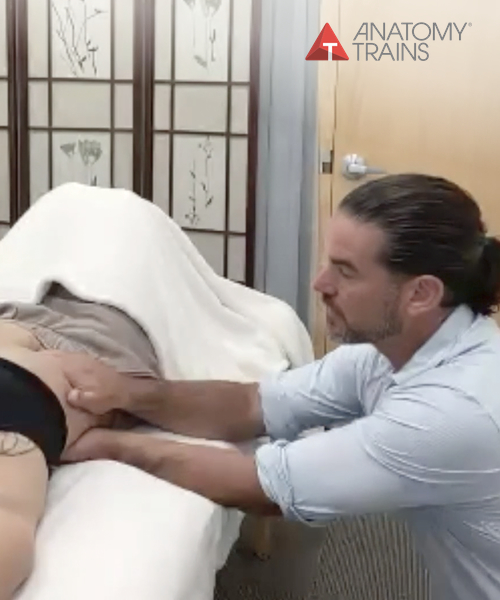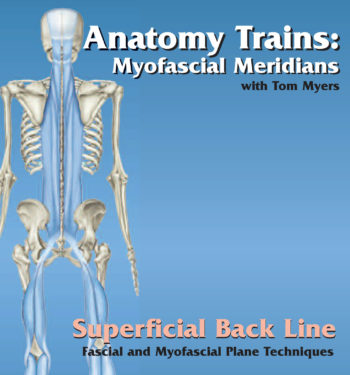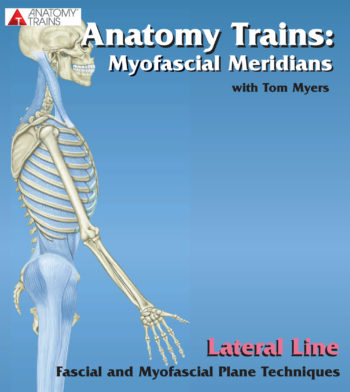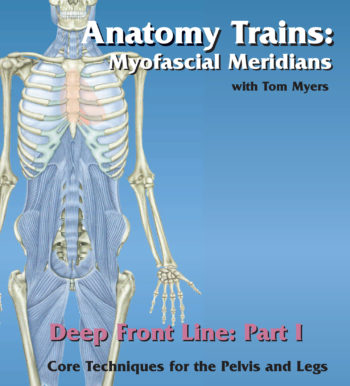This webinar series is focused on working with women postpartum, presented by Anatomy Trains Senior teacher Michael Watson.
This series is 4 x 2 hour webinar sessions, with a combination of anatomical principles and demonstrations on a live model for postural assessment, strategy, cueing, and manual and movement therapy for women postpartum.
Session 1: Goals & Principles of Structural Integration in the Postpartum Body
Duration: 2 hours
Part 1: Foundations of SI in the Postpartum Period
- Introduction to Structural Integration: Ida Rolf’s legacy
- Understanding postpartum physiology and fascia: changes in the body’s tensegrity model
- Why SI matters postpartum: the role of gravity, structure, and sensory awareness
Part 2: Core Goals of Postpartum SI
- Reestablishing core line and grounding
- Reorganizing pelvic-lumbar relationships
- Supporting myofascial decompression and hydration
- Enhancing somatic presence and psycho-emotional integration
Part 3: Fascial Adaptations During Pregnancy & Birth
- Myofascial elongation and shortening patterns
- Pelvic diaphragm strain and tailbone torque
- Scar tissue impact (e.g., cesarean, episiotomy)
- Visceral repositioning and breath limitations
Part 4: Body Mapping & Assessment
- Hands-on fascial listening
- SI-style body reading in standing and walking
- Identifying asymmetries in the pelvis, legs, and breath
- Postpartum timeline: when to begin and contraindications
- Practice Demo: Postpartum fascial glide tests and pelvic tilt assessment
Session 2: The Pelvis, Core & Breath
Duration: 2 hours
Part 1: Pelvic Floor Integration
- Layers of the pelvic floor: anatomy, fascial connections (via the Deep Front Line)
- Addressing pelvic pain, prolapse, urinary incontinence
- Re-establishing tone and lift without over-contraction
Part 2: Abdominal Wall & Diastasis Recti
- Fascial sheath of the rectus abdominis and transversalis
- SI strategies to support natural closure
- How to work without reinforcing splinting or bracing patterns
Part 3: Breath & Core Coordination
- Rib cage mobility and postural restoration
- Relationship between breath, pelvic floor, and thoracic outlet
- Breathwork as a fascial decompression tool
Practice Demo:
- Pelvic lift with breath awareness
- Fascial work around the pubic arch and iliacus
- Diaphragmatic decompression techniques
Session 3: Reclaiming Spine, Ribs & Upper Body
Duration: 2 hours
Part 1: The Breastfeeding Body
- Forward head, collapsed sternum, internally rotated shoulders
- SI techniques to support spine length and thoracic decompression
- Working with the intercostals, serratus anterior, scalenes
Part 2: Repatterning Arm & Shoulder Use
- Upper limb strain from carrying and lifting
- Fascia connections from shoulder to pelvis (Superficial Front/Back Lines)
- SI strategies for scapular release and clavicle opening
Part 3: Restoring Spinal Continuity
- Lumbar compression patterns from birth positions and carrying
- T12, sacrum, and coccyx relationships
- SI work to restore spinal wave and segmental articulation
Practice Demo:
- Rolfing-inspired side-lying spinal decompression
- Arm line fascial glide work
- Breast tissue and pectoral myofascial release (with consent & draping)
Session 4: Integration, Movement & Psycho-Emotional Recovery
Duration: 2 hours
Part 1: Fascial Integration through Movement
- From table to movement: why movement is crucial postpartum
- Gait, posture, and dynamic balance restoration
- Rebuilding the spiral lines: contralateral movement and rotation
Part 2: Psycho-Emotional Landscape of Postpartum
- Somato-emotional patterns in the pelvic floor and diaphragm
- Touch as safety: trauma-sensitive SI practice
- Listening touch and the importance of pacing
Part 3: Creating a Personal Integration Plan
- Mapping a 5–12 session SI sequence for postpartum clients
- Adapting the 12-Series or Principles Model
- Home exercises and movement prescriptions
Practice Demo:
- Standing wave exercise
- Embodied cueing for core and pelvic floor
- Partner touch practice: listening hands on sacrum
Previously presented live via Zoom, August 2025
Run time: Approximately 8 hours







Reviews
There are no reviews yet.